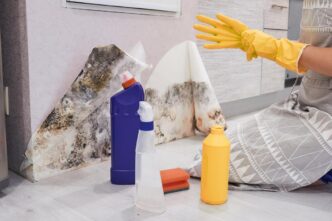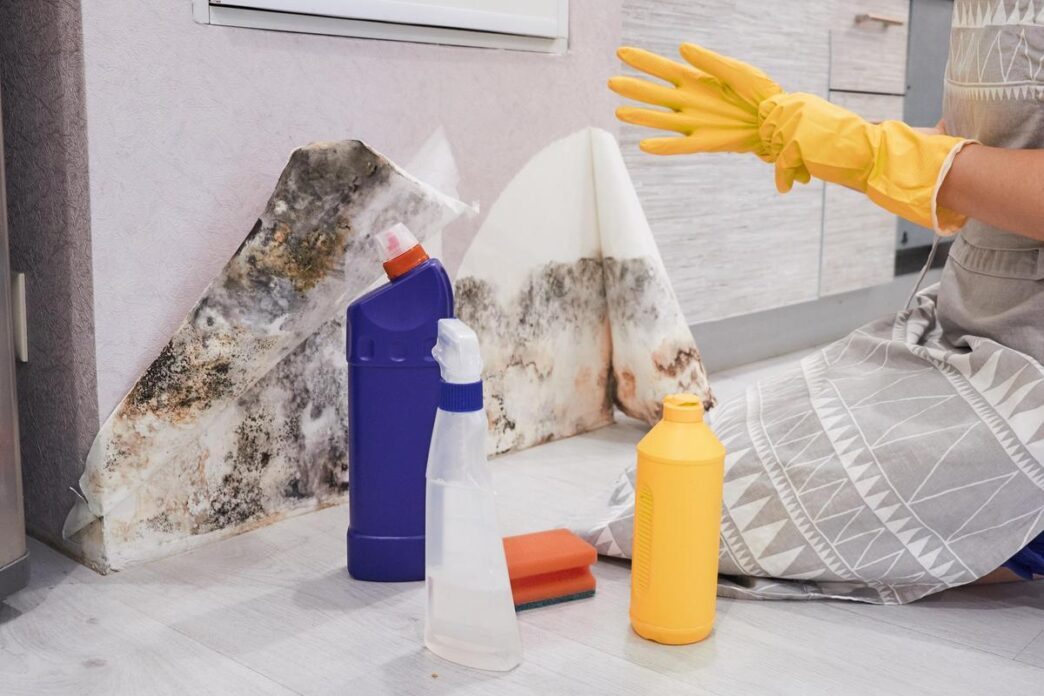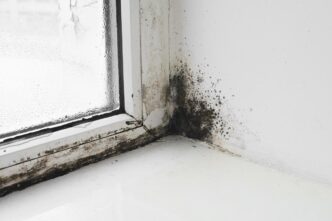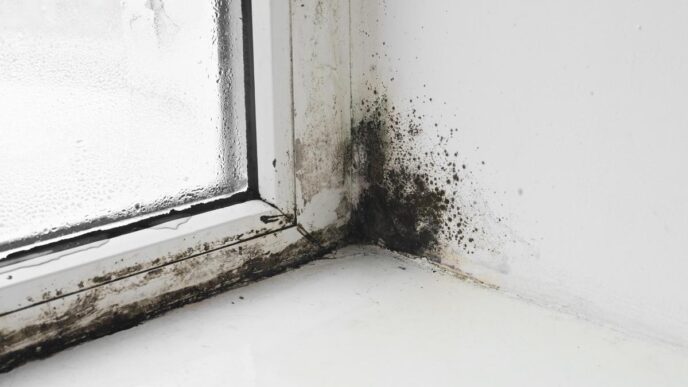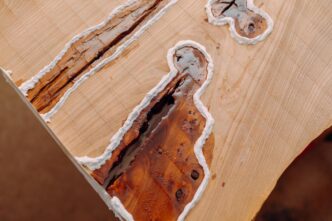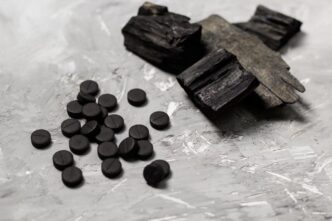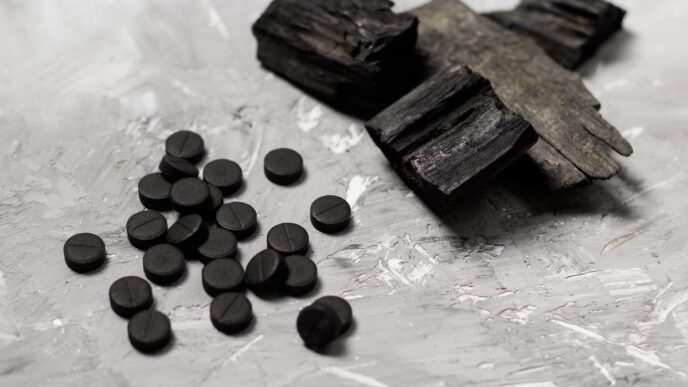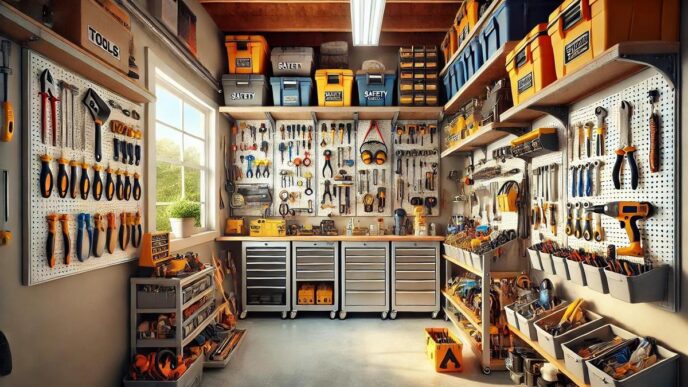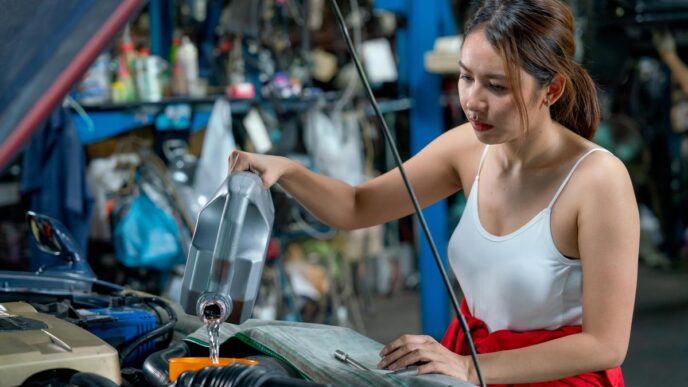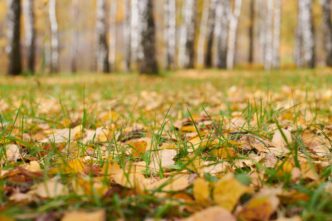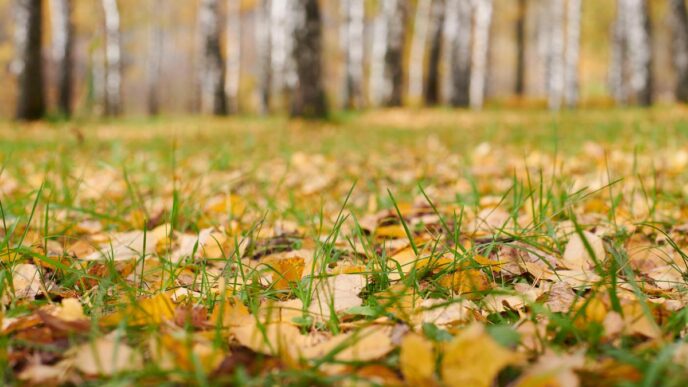Key Takeaways:
- Choose mold removers based on surface type and safety: Chlorine bleach is effective for tiles; vinegar suits painted walls.
- For mold on wallpaper, use a mix of water, borax, and vinegar.
- Home remedies include baking soda and tea tree oil for natural, safe cleaning.
- Prevent mold by managing moisture: Use dehumidifiers, fix leaks, and keep areas dry.
- Regular maintenance, like using mold-resistant paint, helps prevent mold growth.
- Professional remediation is necessary for significant mold areas (over 10 sq ft) or black mold.
- Mold can worsen respiratory issues; maintain air quality by controlling humidity.
- Mold inspectors use specialized tools for hidden mold detection.
- Seek professional help if mold persists to ensure safety and thorough remediation.
Is mold creeping onto your walls, and you're unsure how to tackle it? Fear not—my guide dives deep into the best mold removers for walls. I'll show you which products work, how to evaluate them, and when to use DIY methods. Plus, we'll explore simple home remedies that keep those pesky spores at bay. Stay mold-free and learn how to keep your home safe and healthy! Let’s get started.
What Are the Best Mold Removers for Walls?
Choosing the right mold remover can feel tricky. When dealing with mold on walls, you must focus on effectiveness and safety. Each remover has its strengths, so understanding them is key. One popular choice is chlorine bleach. It works well on tiles but may fade colored grout. Another option is distilled vinegar, praised for its natural cleaning power.
There are also commercial products designed for residential use. These often blend strong cleaning agents with user safety in mind. You might find them listed among the best mold removers for walls. But, when picking one, consider your specific project. Is the mold on tiles, paint, or wallpaper? Each surface needs a different cleaning approach.
For specific projects like ceramic tiles, chlorine bleach may be fitting. But on wallpaper, consider a mix of water, borax, and vinegar. To prevent mold from returning, control moisture. Quick fixes like baking soda can help too. Spread it on molds, scrub, and wash.
I explore these products carefully by reading customer reviews and comparisons. Listening to other opinions helps find the right solution. So, tap into resources and personal experiences, then pick what suits your need. Whether commercial or homemade, approach each choice with care. Understanding each product’s strengths can teach you how to handle mold in your home, ensuring safe and clean walls.
How Can You Safely Remove Mold From Painted Walls?
Mold on walls is a clear sign of trouble. First, gather the right tools. You will need a scrub brush, gloves, a mask, a spray bottle, and a cleaning cloth. These will protect you and help remove the mold properly.
To clean mold with vinegar, fill your spray bottle with vinegar. Spray the moldy area on the wall. Let it sit for about an hour to work its magic. After that, scrub the area gently with your brush. Wipe away any residue with a cloth.
While cleaning mold, safety is the priority. Wear gloves and a mask before starting. This protects your skin and lungs from mold spores. If using bleach, ventilate the room and ensure long exposure is avoided. If the area is large or mold persists, professional help might be needed.
Vinegar is a natural option to combat mold. It is safe for painted walls and lowers the chance of mold returning. Compared to harsh chemicals, vinegar is less harmful and can be used frequently.
Remember, mold needs moisture. Make sure to check your walls often for leaks or damp spots to prevent more mold. Control the air in your home, too. Use fans and heaters to keep moisture levels down, especially after showers or cooking. Mold is a pesky problem, but with the right steps, it can be managed effectively.
What Are Effective Home Remedies for Mold Removal on Walls?
Mold on walls requires attention to prevent damage and health problems. Natural remedies stand out as safe and accessible options. Baking soda is a helpful tool for cleaning mold. To use it, mix half a cup of baking soda with water to form a paste. Apply the paste to the moldy area, let it sit for about 10 minutes, then scrub.
Essential oils play a part in mold removal too. Are essential oils effective against mold? Yes, they can help. Some oils, like tea tree oil, have natural properties that combat mold. Mix one teaspoon of tea tree oil with one cup of water in a spray bottle. Spray the mixture on the mold, wait for an hour, and then wipe it clean. This method is simple and smells good.
What natural solutions can replace chemical cleaners? Vinegar is a strong choice for mold removal. It is effective and does not harm the surface. Pour white vinegar into a spray bottle and spray it directly on the mold. Wait for an hour and scrub with warm water. This helps remove mold without harsh chemicals.
Sometimes, extra help is needed for tough spots. Mixing two cups of water, two tablespoons of borax, and a quarter cup of vinegar can work wonders. This mix is great for painted or wallpapered walls. Spray it on, scrub it in, and let it sit to tackle stubborn mold like this.
Staying on top of mold means keeping surfaces dry. Home remedies offer a safe, easy solution.
How to Prevent Mold Growth on Walls?
Preventing mold is all about managing moisture on your walls. Mold loves damp spots, so we must stay one step ahead.
What Role Does Humidity Control Play in Mold Prevention?
Humidity control is key to stopping mold. Keep rooms dry to prevent spores. Running exhaust fans helps reduce moisture in bathrooms and kitchens. Ensure to fix leaks fast to stop water buildup. Using a dehumidifier also helps keep your home at safe humidity levels.
How Can Regular Maintenance Prevent Mold?
Regular maintenance stops mold before it starts. Check your walls for cracks or leaks often. Paint with mold-resistant paint can help as a barrier. Quick repairs mean fewer issues long-term. Clean mildew-prone areas using mold-killing cleaning solutions. Mold can't grow without moisture and a surface to cling to.
What Habits Can Help Reduce Mold Growth Risk?
Changing our habits makes a big difference. Keep doors open for air circulation which dries moisture faster. Hang wet clothes or towels outside or in a spot with a fan. This practice keeps mold from finding a wet home. Frequent cleaning keeps mold less likely to find food on your walls. Even minor changes like these have large impacts.
Staying proactive helps you avoid big mold issues before they start. If mold returns or your efforts seem small against a larger problem, consider using professional mold remediation services to assess and fix the spaces. Prevention efforts also contribute to a healthy home for you and those you care about.
When Is Professional Mold Remediation Necessary?
Professional mold remediation is crucial when mold poses a significant danger in your home. How do mold inspectors identify mold severity? Inspectors use tools like thermal imaging and air sampling. These tools help find hidden mold, which can grow in unseen spaces and impact your health. A visual check might miss something lurking behind walls.
What are the benefits of hiring professionals for mold remediation? The biggest benefit is thoroughness. Experts know the different steps involved in professional mold remediation. First, they assess the problem and set up barriers to prevent mold spread. Next, they use air filters to clean the air, sometimes using a HEPA filter. Then, they remove the mold physically and clean the area well. Once cleaned, they repair and restore any damaged materials. Finally, they test the area again to make sure it’s mold-free.
When should homeowners seek professional help? If mold covers an area larger than 10 square feet, don't tackle it alone. You should also seek help if you suspect black mold. People with mold allergies or breathing issues should call in experts, too. They can safely handle the mold and keep your air clean. If repairs or cleaning don’t solve the problem, this could point to a deeper mold issue. Act fast to ensure a safe living space, free from mold risks. Engage professionals for proper mold remediation to keep your family safe.
What Are the Health Impacts of Mold in Your Home?
Mold can sneak up in any home, focusing on damp spots like bathrooms and kitchens. It might seem harmless at first, but understanding the health impacts is vital. So, what symptoms indicate mold exposure? Precision: Nasal stuffiness, cough, or wheezing are common symptoms. You might feel itchy eyes or skin. Some people have worse reactions, especially those with mold allergies.
Now, how can mold affect indoor air quality? Precision: Mold can release spores into the air. These spores can trigger respiratory problems. Mold spores float everywhere easily. Breathing them in can irritate your lungs. This is a bigger risk for people with asthma or weak immune systems. Mold doesn't just look bad; it can be a real nuisance to health.
You might wonder, what steps can be taken to mitigate health risks? Precision: The key is to control moisture levels. Use fans when cooking or bathing. Fix leaks quickly to ensure areas stay dry. Reducing moisture helps cut down mold growth, protecting your health.
If mold covers more than 10 square feet of your wall, professional help is wise. Mold inspectors use tools to find hidden mold. Sometimes, chemicals or natural solutions like vinegar might be necessary. On a small scale, both can be effective. Keeping mold in check keeps your home and lungs happy.
In chronic cases, mold exposure can lead to severe health issues. Prolonged contact may cause problems like memory loss or trouble breathing. Taking mold seriously can keep both your home and body safe.
Conclusion
Choosing the best mold remover for your walls requires careful thought. We looked at top products and DIY methods, weighing their pros and cons. Each approach has its perks, from vinegar's natural touch to commercial cleaners' quick action. Safe removal starts with the right tools and steps to protect yourself. Don't ignore signs of mold; if in doubt, call a pro. Remember, prevention beats cure: control humidity, maintain your spaces, and be vigilant. Protecting your home means ensuring a healthy, mold-free environment for everyone.
